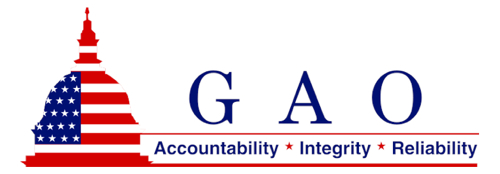The General Accountability Office (GAO) adds the EPA‘s Toxic Substances Control Act (TSCA), to its 2009 High Risk list, saying that the EPA “lacks adequate scientific information on the toxicity of many chemicals that may be found in the environment”.
[social_buttons]
The GAO recommends that the Obama administration place a high priority on upgrading the policies for assessment and control of toxic chemicals.
“EPA’s inadequate progress in assessing toxic chemicals significantly limits the agency’s ability to fulfill its mission of protecting human health and the environment.” – GAO
From the GAO High Risk report:
The EPA’s ability to protect public health and the environment depends on credible and timely assessments of the risks posed by toxic chemicals. Its Integrated Risk Information System, which contains assessments of more than 500 toxic chemicals, is at serious risk of becoming obsolete because EPA has been unable to keep its existing assessments current or to complete assessments of important chemicals of concern. Overall, EPA has finished only nine assessments in the past three years; at the end of 2007, most of the 70 ongoing assessments had been underway for more than five years. EPA urgently needs to streamline and increase the transparency of this assessment process. The agency also requires additional authority than currently provided in the Toxics Substance Control Act to obtain health and safety information from the chemical industry and to shift more of the burden to chemical companies to demonstrate the safety of their products.
The GAO is an independent, non-partisan arm of Congress that investigates how the federal government spends taxpayer dollars. The High Risk list documents the federal programs, policies, and operations that are at “high risk” for waste, fraud, abuse, and mismanagement or in dire need of transformation.
The Environmental Working Group also backs a major reform of the TSCA known as the Kid-Safe Chemicals Act, which would require chemicals to be proved safe for children before they can be sold, and obligates the manufacturers to provide the test data at their expense. Currently, the EPA must provide and pay for any testing. The Kid-Safe act would cover all chemicals in commercial use.
“The Bush administration never met an industry lobby it didn’t like, so it’s no surprise that it left the federal toxics controls program in shambles. Toxic chemicals linked to serious health problems have cascaded onto the marketplace and into consumer products for more three decades. Our bodies, even our children’s bodies, have been polluted by hundreds of industrial chemicals whose long-term damage to human health is only beginning to be understood.” – EWG Executive Director Richard Wiles
According to EWG, “in 32 years of enforcing TSCA, EPA has evaluated the safety of just 200 chemicals on the market, and banned or regulated only 5. EPA tried but failed to ban asbestos under TSCA, which is responsible for 10,000 cancer deaths every year.”
Two other areas considered at high risk for the GAO are the U.S. financial regulatory system and the FDA‘s oversight of medical products. In the report, the head of the GAO, Gene L. Dodaro, also stated “The Department of Defense continues to dominate the High Risk List. The military’s lack of progress is of growing concern to GAO. DOD owns eight areas on the High Risk List outright, and it shares government wide responsibility for an additional seven areas.”

Los Angeles Unified claims they have no money for anything, yet we miraculously remodel every lausd cafeteria. There is money well spent. To top it off every tray is STYROFOAM!!! You have got to be kidding. Thousands of trays of this stuff is being used and thrown away. What a ecological nightmare.
The TSCA is definitely High Risk legislation, and the current provisions of KSCA offer some hope for reform. However, equally as integral to human health and safety is the improvement of the science behind chemical regulatory legislation. Current animal models (while rudimentary and imperfect) have become the standard for chemical toxicity testing. Improperly tested chemicals are just as dangerous as those not tested. The National Research Council recently produced a report, “Toxicity Testing in the 21st Century: A Vision and Strategy,” that specifically addresses the dangers of these archaic models with a clear-cut plan for updating chemical toxicity testing, thus ensuring more human-relevant, non-animal tests and information to better protect ourselves, our friends and family, and generations to come.